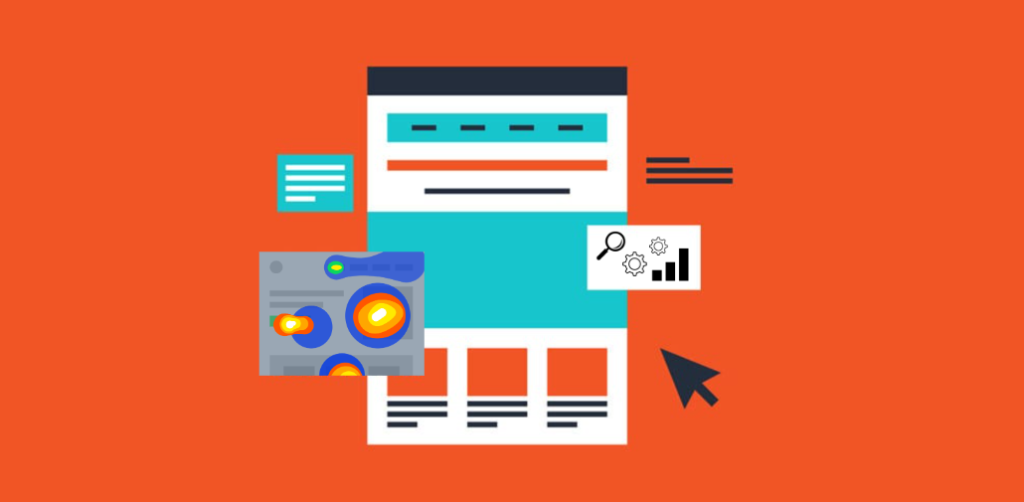Landing pages are the unsung heroes of digital marketing. They serve as the critical entry point where potential customers or leads first interact with your brand. Unlike your website’s homepage or other content pages, landing pages are specifically designed to guide visitors towards a single, focused call to action (CTA). This could be anything from signing up for a newsletter, requesting a demo, making a purchase, or filling out a contact form.
The primary purpose of a landing page is to convert visitors into leads or customers. It’s the place where your marketing efforts are meant to pay off. When done right, landing pages can be incredibly effective in achieving your business objectives. However, if they’re not optimised, they can also be a significant drain on your resources, both in terms of time and money. So, how can you ensure that your landing pages are performing at their best? The answer lies in using analytics to gain insights into user behaviour and fine-tuning your pages accordingly.
The Impact of a Well-Optimised Landing Page
As we said, a well-optimised landing page can have a profound impact on your business. Here are some of the benefits you can expect when your landing pages are performing at their best:
- Increased Conversions: The most obvious benefit of a well-optimised landing page is higher conversion rates. By making it easier for visitors to take the desired action, you’ll see a significant increase in leads, sales, or other conversions.
- Improved ROI: When you’re spending money on advertising to drive traffic to your landing pages, a higher conversion rate means a better return on investment (ROI). You’ll be getting more value out of your marketing budget.
- Enhanced User Experience: Landing pages that are designed with user experience in mind tend to keep visitors engaged and satisfied. A positive user experience can lead to better brand perception and customer loyalty.
- Better Data Insights: Through the use of analytics tools, you can gain valuable insights into how visitors interact with your landing pages. This data can inform your marketing strategies and help you better understand your audience.
- Competitive Advantage: In a crowded digital marketplace, a well-optimised landing page can set you apart from the competition. It can be the differentiating factor that convinces potential customers to choose your product or service.
Now that we’ve established the importance of landing page optimisation, it’s time to delve into the specifics of how to use analytics to achieve these benefits. Let´s see the essential steps to use analytics effectively in optimising your landing pages:
Step 1: Define Clear Goals
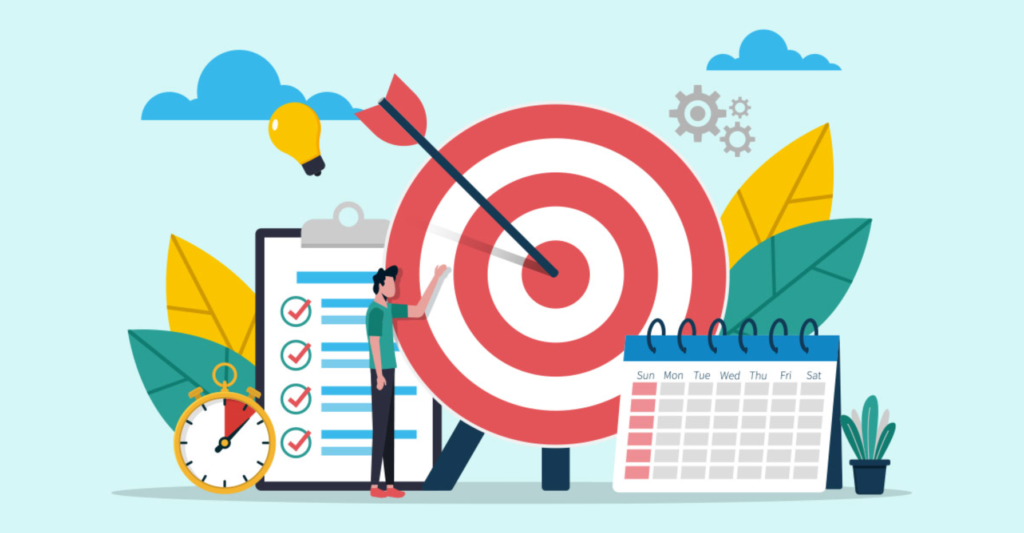
Before diving into analytics, you must establish clear and specific goals for your landing page. What action do you want your visitors to take? Whether it’s making a purchase, signing up for a newsletter, or downloading a resource, define your objectives clearly. These goals will serve as the foundation for your analytics efforts.
Here are some common conversion goals for landing pages:
- Lead Generation: Encouraging visitors to fill out a contact form, sign up for a newsletter, or download a free resource in exchange for their contact information.
- Sales: Convincing visitors to make a purchase, whether it’s a product, service, or subscription.
- Event Registration: Getting visitors to sign up for a webinar, seminar, conference, or any other event your business is hosting.
- Request a Demo or Trial: Encourage potential customers to try out your product or service with a demo or trial.
- Click-Through: Moving visitors to the next stage of the sales funnel, such as a product page or a pricing page.
It’s crucial to select conversion goals that are relevant to your business and your marketing campaign. Setting clear and achievable goals is the first step toward successful landing page optimisation.
Step 2: Aligning Goals with Analytics
Once you’ve defined your conversion goals, it’s time to align them with analytics. Analytics tools are your best friends when it comes to understanding how visitors interact with your landing page. Here’s how to connect your goals with analytics:
- Choose the Right Analytics Tool: To optimise your landing pages, you need the right tools to collect data effectively. Google Analytics is one of the most widely used analytics platforms and offers a comprehensive set of features for tracking user behaviour. Ensure that you have it set up correctly on your website, including tracking codes on your landing pages.
- Define Conversion Events: In your analytics tool, you’ll need to set up conversion events that correspond to your goals. For example, if your goal is lead generation, you can track form submissions as a conversion event.
- Establish Goal Values: To measure the impact of your landing page, assign a monetary value to your conversion goals. This helps you understand the direct financial impact of your landing page’s performance.
- Implement Goal Tracking: Ensure that your analytics tool is configured to track the specific actions that lead to a conversion. For instance, if your goal is a product purchase, the analytics tool should track the entire purchase process, including the checkout page.
- Set Up E-commerce Tracking: If your landing page is tied to e-commerce, use e-commerce tracking features in your analytics tool to gain insights into product sales, transaction values, and more.
By connecting your conversion goals to analytics, you’ll be able to monitor your landing page’s performance and gather valuable data on how visitors are progressing towards these goals.
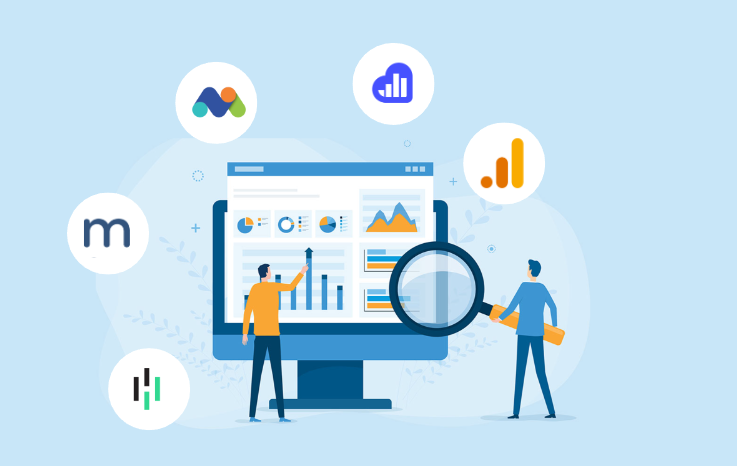
Step 3: Track Key Metrics
Once your analytics tools are in place, it’s time to start collecting data. Here are some key metrics to focus on when analysing your landing page performance:
- Conversion Rate: This metric tells you the percentage of visitors who complete your desired action. It’s a crucial indicator of how effective your landing page is at achieving its goals.
- Bounce Rate: Bounce rate measures the percentage of visitors who leave your landing page without interacting further. A high bounce rate may indicate that your landing page isn’t engaging or relevant to your audience.
- Click-Through Rate (CTR): CTR measures the percentage of visitors who click on a specific link or call to action (CTA) on your landing page. It’s particularly relevant for evaluating the performance of CTA buttons.
- Average Session Duration: This metric shows how long visitors stay on your landing page. A longer duration often indicates that your content is engaging and valuable.
- Traffic Sources: Analyse where your landing page traffic is coming from. This information can help you tailor your page to different audience segments.
- Exit Pages: Identify which pages on your site are the last ones visitors see before leaving. This can pinpoint issues that need attention.
- Form Abandonment Rate: For lead generation pages with forms, this KPI tracks the percentage of users who start filling out a form but do not complete it. High form abandonment rates may indicate issues with your form design or length.
- Traffic Segmentation: You can break down your traffic into segments to analyse how different groups of visitors behave on your landing page. For instance, segmenting by demographics, location, or device can reveal important insights.
- Conversion Funnel Metrics: Tracking the conversion funnel allows you to see where users drop off before completing a conversion. This helps you pinpoint the areas that need optimisation.
- Page Load Time: Slow page load times can negatively impact user experience and lead to higher bounce rates. Analysing page load times can help you identify performance issues.
- Mobile Metrics: With the growing use of mobile devices, it’s crucial to track mobile-specific metrics, such as mobile bounce rate, mobile conversion rate, and mobile click-through rate.
- Scroll Depth: Understanding how far users scroll down your landing page can reveal where the most valuable content should be placed.
The combination of these KPIs provides a comprehensive view of your landing page’s performance. By continuously monitoring these metrics, you’ll be able to identify areas that need improvement and make data-driven decisions to boost your conversion rates.
Step 4: Conduct A/B Testing
A/B testing, also known as split testing, is an essential component of landing page optimisation. It involves creating two or more versions of a landing page with slight variations and then exposing these versions to different segments of your audience. By comparing the performance of these variations, you can determine which elements are most effective in driving conversions.
Here are the key elements you can A/B test on your landing page:
- Headlines and Subheadings: Test different headline and subheading variations to see which ones capture the audience’s attention and convey your message most effectively.
- CTA Buttons: Experiment with different CTA button text, colours, sizes, and placements to find the combination that leads to the highest click-through rates.
- Images and Visuals: Test different images, graphics, and videos to see which ones resonate with your audience and drive engagement.
- Form Fields: If your landing page includes a form, test variations in the number of form fields, field labels, and the order in which they appear.
- Content-Length: Determine the optimal length of content on your landing page by testing long-form and short-form content.
- Testimonials and Social Proof: Experiment with different testimonial placements, formats, and the quantity of social proof displayed.
- Page Layout: Adjust the overall layout, including the placement of elements and the use of whitespace.
- Mobile Optimisation: Test how well your landing page performs on mobile devices, making adjustments as needed for a mobile-friendly experience.
A/B testing is an ongoing process that allows you to refine and improve your landing page over time. It’s essential to follow a structured approach to A/B testing, including creating hypotheses, setting up experiments, and analysing results. We’ll explore A/B testing in more detail in Chapter 14.
Step 5: Heatmaps and User Recordings
To optimise your landing page effectively, you must gain a deep understanding of how visitors interact with it. Traditional analytics tools can provide valuable quantitative data, but they often lack the visual context necessary to identify user behaviour patterns. This is where heatmaps come into play.
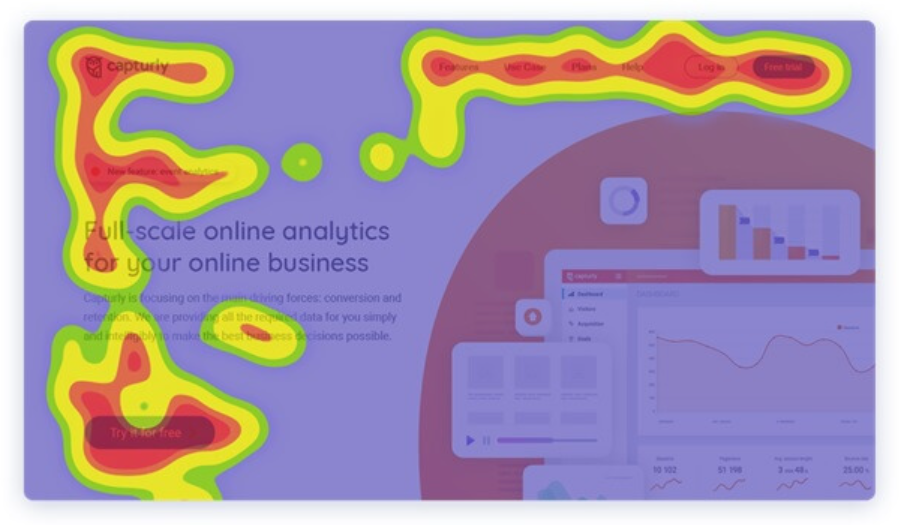
Heatmaps visually represent where users click, move their cursors, and scroll on your landing page. User recordings allow you to watch how visitors navigate your page. These tools can reveal user frustrations and areas where visitors may be dropping off.
Let’s dive into how to use heatmaps effectively to optimise your landing page:
- Identify Click Patterns: Review your click heatmap to see which elements are attracting the most attention. Are users clicking on your CTA buttons, images, or navigation links? Use this information to optimise the placement of essential elements.
- Analyse Scroll Behavior: Scroll heatmaps can reveal where visitors tend to lose interest and stop scrolling. If important content or CTAs are below the fold (out of the initial screen view), consider moving them higher on the page.
- Evaluate Mobile Interaction: Heatmaps can be especially useful for analysing how users interact with your landing page on mobile devices. Mobile users often have different interaction patterns compared to desktop users.
- Test New Element Placements: Heatmaps can provide valuable insights into which elements, such as images or forms, should be placed in areas of high user engagement. Test different placements based on heatmap data to see if it improves conversions.
- Spot Usability Issues: Heatmaps can reveal if users are clicking on non-clickable elements or struggling to find essential elements. This information can help you rectify usability issues on your landing page.
- Iterate and Improve: Regularly analyse heatmaps and use the insights to make informed design and content decisions. Over time, these incremental improvements can lead to substantial gains in conversion rates.
By incorporating heatmaps into your optimisation strategy, you’ll gain a visual understanding of user behaviour that traditional analytics alone can’t provide.
Step 6: Analyse User Flow and Bounce Rates
User flow analysis is a fundamental aspect of understanding how visitors navigate and interact with your landing page. It allows you to track the paths users take, the pages they visit, and the actions they perform. User flow analysis is often used to identify bottlenecks and opportunities for improvement in the conversion journey.
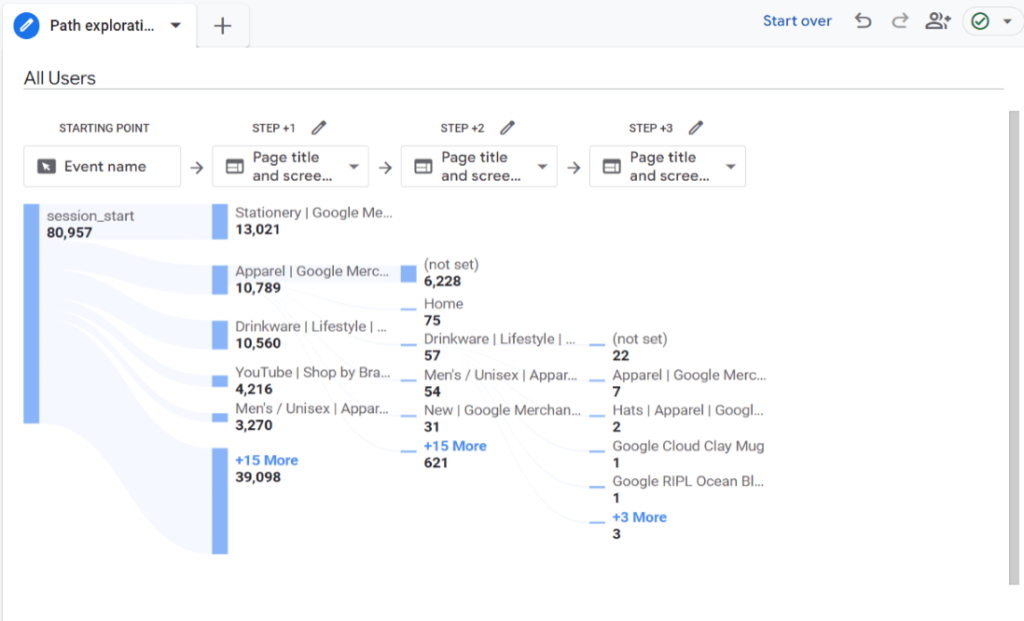
Here are some key concepts related to user flow analysis:
- Entry Pages: Entry pages are where users begin their journey on your site. For landing pages, these are typically the pages you’re actively promoting through advertising, email campaigns, or social media.
- Exit Pages: Exit pages are where users leave your site. Analysing exit pages can help you identify points of abandonment on your landing page.
- Conversion Paths: These are the pathways users take to complete a conversion goal. For example, a user may land on your page, view a product, add it to the cart, and then complete the purchase.
- Drop-Off Points: Drop-off points are where users abandon the conversion process. Identifying these points allows you to focus on optimising the specific elements or steps that are causing users to disengage.
- Pages per Session: This metric indicates how many pages users typically view during a single visit to your site. For landing pages, you want users to remain engaged and navigate through multiple sections.
- Session Duration: The average time users spend on your landing page can reveal their level of engagement and interest in your content. Longer session durations often indicate stronger interest.
- Goal Completions: Tracking the number of users who successfully complete your conversion goals is a primary focus of user flow analysis.
Analysing user flow on your landing page provides actionable insights into how visitors move through your site and where they might be encountering obstacles in their journey. This data enables you to make strategic improvements to guide users more effectively towards conversion.
Reducing Bounce Rates
One of the key challenges in landing page optimisation is reducing bounce rates. The bounce rate is the percentage of visitors who navigate away from your landing page after viewing only one page. A high bounce rate can be indicative of a disconnect between user expectations and the content or design of your landing page. Here are strategies to reduce bounce rates:
- Ensure Message Match: The content and message on your landing page should align with the messaging used in your marketing campaigns. If your ad promised a specific benefit, your landing page must deliver on that promise.
- Optimise Page Load Speed: Slow-loading pages can frustrate users and lead to high bounce rates. Optimise your landing page for speed by compressing images, minimising code, and leveraging content delivery networks (CDNs).
- Mobile Optimisation: Given the prevalence of mobile users, your landing page must be responsive and provide a seamless experience on various devices and screen sizes.
- Clear and Compelling Headlines: An attention-grabbing headline that clearly communicates the page’s purpose can captivate visitors and encourage them to stay.
- Use Visual Hierarchy: Design your landing page with a clear visual hierarchy that directs users’ attention to the most important elements, such as CTAs.
- Simplify Navigation: Minimise distractions and navigation options on your landing page. Keep the focus on the primary conversion goal.
- A/B Test for Clarity: Experiment with different page layouts, content lengths, and design elements to see what resonates best with your audience.
- Emphasize Value Proposition: Highlight the unique value or benefits of your offer prominently on the page. Users should immediately understand what they stand to gain.
- Optimise for Relevant Keywords: If your landing page is driven by organic search traffic, ensure that it aligns with the keywords users are searching for.
- Use Compelling Visuals: High-quality images, videos, and infographics can enhance user engagement and reduce bounce rates.
By addressing these bounce rate reduction strategies, you can create landing pages that better align with user expectations and encourage visitors to stay, explore, and take action.
Step 7: Analyse User Feedback
Analytics shouldn’t be limited to quantitative data. Qualitative insights from user feedback are equally valuable. Encourage users to leave comments, take surveys, or provide feedback on your landing page. Analyse this feedback to uncover pain points and areas for improvement that data alone might not capture.
Step 8: Iterate and Refine
Optimising landing pages is an ongoing process. Regularly review your analytics data and make iterative changes to your landing pages. The digital landscape is constantly evolving, and user behaviour can change, so it’s crucial to stay responsive to these shifts.
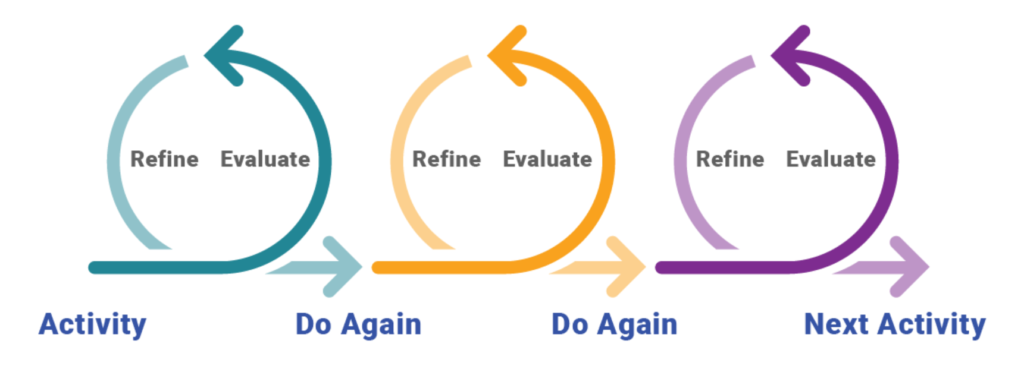
The goal is not to create a “perfect” page but to adapt to changing user behaviour and preferences, improve performance, and achieve better results. Here’s how to implement a continuous improvement cycle:
- Data Collection: Continue collecting data on user interactions, conversions, and other key metrics. Tools like Google Analytics can provide valuable insights.
- Set Performance Benchmarks: Define key performance indicators (KPIs) and benchmarks that align with your business goals. These might include conversion rates, bounce rates, and click-through rates.
- Regular Analysis: Regularly review your landing page performance and compare it against the established benchmarks. Identify areas that need improvement.
- Prioritise Changes: Prioritise the changes and optimisations that will have the most significant impact on your goals. Focus on the elements that matter most to your audience.
- Hypothesize and Test: Develop hypotheses about what changes can lead to improvements. Implement A/B tests to validate these hypotheses.
- Iterate and Implement: If A/B tests yield positive results, implement the winning variations. Continue the iterative process of testing, learning, and refining.
- User Feedback: Encourage and collect user feedback through surveys, polls, or comments. Use this feedback to identify pain points and areas for improvement.
- Competitor Analysis: Keep an eye on your competitors’ landing pages and industry best practices. Borrow ideas and strategies that align with your audience’s preferences.
- Content Refresh: Regularly update and refresh content to keep it relevant and engaging. Remove outdated information and replace it with fresh, valuable content.
- Mobile Optimisation: Given the increasing use of mobile devices, ensure that your landing page is continuously optimised for mobile users.
- Technical Optimisation: Monitor page load speed, broken links, and other technical aspects to ensure a smooth user experience.
- Security and Privacy: Regularly update and maintain security measures, privacy policies, and trust signals to instil user confidence.
- Multichannel Integration: Ensure that your landing page integrates seamlessly with various marketing channels, such as email marketing, social media, and paid advertising.
- User Segmentation: Segment your audience based on demographics, behaviour, and preferences. Tailor landing page elements to different segments for a more personalised experience.
- Review and Report: Regularly report on your optimisation efforts, successes, and areas for improvement to relevant stakeholders.
Landing page optimisation is a dynamic process that requires ongoing attention and adaptation. By continuously striving to improve user experience and conversion rates, you can stay ahead of the competition and maintain a high-performing landing page.

Landing page optimisation is a multifaceted process that combines persuasive writing, user experience design, data analysis, and ongoing testing. By implementing the strategies and techniques outlined in this comprehensive guide, you can create landing pages that not only capture your audience’s attention but also persuade them to take action.
Remember that landing page optimisation is an ongoing journey. Stay attuned to user behaviour, adapt to changing trends, and continuously strive for improvements. With each iteration, you’ll be better positioned to achieve your conversion goals and drive results for your business.
Your landing pages are the gateways to your products, services, and brand. Make them engaging, trustworthy, and conversion-focused, and you’ll be well on your way to digital marketing success.

